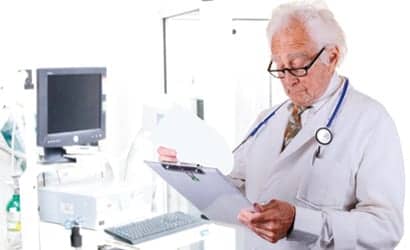Researchers have discovered the biochemical signals in mice that trigger generation of new lung alveoli. Specifically, the regenerative signals originate from the specialized endothelial cells that line the interior of blood vessels in the lung. These findings appear in the journal Cell.
While it has long been known that mice can regenerate and expand the capacity of one lung if the other is missing, this study now identifies molecular triggers behind this process, and the researchers believe these findings are relevant to humans.
"Several adult human organs have the potential upon injury to regenerate to a degree, and while we can readily monitor the pathways involved in the regeneration of liver and bone marrow, it is much more cumbersome to study the regeneration of other adult organs, such as the lung and heart," says Shahin Rafii, MD, the study’s lead investigator and the Arthur B. Belfer Professor of Genetic Medicine and co-director of the Ansary Stem Cell Institute at Weill Cornell Medical College.
"It is speculated, but not proven, that humans have the potential to regenerate their lung alveoli until they can’t anymore, due to smoking, cancer, or other extensive chronic damage," says Rafii, who is also an investigator at the Howard Hughes Medical Institute. "Our hope is to take these findings into the clinic and see if we can induce lung regeneration in patients who need it, such as those with chronic obstructive pulmonary disease (COPD)."
Rafii and his team had previously uncovered growth factors that control regeneration in the liver and bone marrow, and in both cases, they found that endothelial cells produce the key inductive growth factors, which they defined as "angiocrine factors." In the current lung study, they discovered the same phenomenon—that blood vessel cells in the lungs jump-start regeneration of alveoli. According to the researchers, this regenerative process only occurs after a trauma that abruptly reduces lung mass. It is only then that specific subsets of blood vessels in the remaining lung receive a message to start to repopulate alveoli.
The researchers found that removal of the left lung of mice activated the receptors of lung endothelial cells that respond to vascular endothelial growth factor (VEGF) and basic fibroblast growth factor (FGF-2). Activation of these receptors promotes the rise of another protein, matrix metalloproteinase-14 (MMP14). The researchers discovered that MMP14, by releasing epidermal growth factors (EGF), initiates the generation of new lung tissue.
When the investigators disabled receptors of VEGF and FGF-2 specifically in the endothelial cells of the mice, the right lung would not regenerate. The defect in the lung regeneration was found to be due to the lack of MMP14 generation from the blood vessels. When these mice received an endothelial cell transplant from a normal mouse, the production of MMP14 was restored, triggering the regeneration of functional alveoli.
According to the researchers, the recovery of lung function and lung mechanics by transplantation of endothelial cells that stimulate MMP14 production may be valuable for designing novel therapies for respiratory disorders. The researchers will next determine if MMP14 and other as-yet unrecognized factors are responsible for lung regeneration in humans as well as mice.
The researchers note that patients with COPD—a disorder most often caused by chronic smoking—have so much damage to their lung endothelial cells that they no longer produce the proper inductive signals. They speculate that replacement of angiocrine factors, or transplantation of normal lung endothelial cells derived from pluripotent stem cells could restore lung regeneration.
Source: Weill Cornell Medical Center









